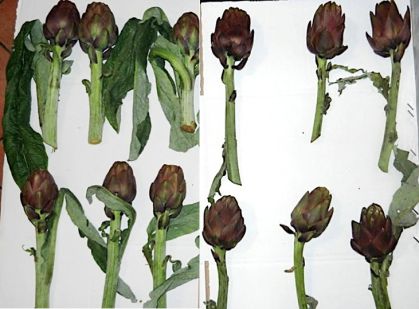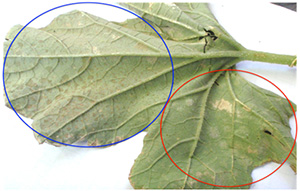- Via Santhià, 5 - 13040 Carisio (VC)
- 0161 97 28 23
- lucaviano68
- info@lucaviano.it
The line of fertilizers marketed by the Viano company is the result of numerous years of research and innovation in the agricultural landscape, a research aimed at making increasingly over-exploited agriculture economically and ecologically sustainable. The technique that allowed the formulation of these products, provides as a cornerstone the continuous contribution of organic matter of plant origin into the soil accompanied by a specific pool of yeasts to the detriment of the now abused molecular chemical fertilizers. With this principle and the development of innovative technologies focused on the interactivity between mineral and organic catalysts of exclusively natural origin, the solid base of these fertilizers was created, which then differentiated thanks to the addition of seaweed extracts, precious organic matter or microelements according to the specific need for use. In the two previous agricultural years, fertilizers have been used on various farms to test their effectiveness in different situations and crops; some of the most relevant case studies observed with the use of these products will be reported below.
Early cycle treatment. On the left of the red line the control, on the right the fertilized plants. Note the strong luxuriance and the marked upright bearing of the plants in question.
The results after the first fertilization appeared visible after only 36-48 hours, confirming the strong stimulus on the vegetative activity necessary for the plant to reach its maximum potential. The productions in spring were exceptional both in quantity and quality: 70,000 artichokes per hectare with an average of 11 pieces sold per plant whose weight differences with flower heads produced with standard techniques are highlighted in the graph below.
The weight loss during drying appeared less in the artichokes in question, highlighting how these better preserve the consistency and turgidity over time also thanks to a greater content of dry substance in the flower heads.

Fertilized artichokes on the left, artichokes with standard techniques on the right.


Fertilized artichokes on the left, artichokes with standard techniques on the right. Control of the oxidation state after 30 ‘from cutting.
During the summer, numerous data were collected on this crop in various companies in Lazio and Tuscany that used VIANO products. The key points of these tests are:

In the photo above you can see the dark drops of the AVATAR treatment inside the blue circle; in the red circle instead, where the treatment has not managed to wet the leaf, you can see the gray pinks characteristic of the powdery mildew mycelium. The product, used as a preventive, has a good protective capacity and, if mixed with other treatments, manages to increase its efficiency.
In the case of nematodes, on the other hand, we have operated with an infestation already in progress, and the result on the cultivation of melon has been surprising, since despite having intervened with plants now seriously affected, these have managed to bring a good production (600 q / Ha) of fair quality.

Above are photos of the roots and the plant with a serious attack of nematodes
Below the fruit brought by that same plant.


Above images of plants in bloom with detail of attached flowers
On the bottom, pull fruits on a single plant: 9 in ripening, 2 in growth.
The graph below shows the production per hectare of farms that use VIANO products (EXP) in comparison with farms that use chemical fertilizers (STD).


The graph compares the apices of the two curves representing the averages of the two distributions: VIANO technique 15,5 °, standard technique 13 °.

The graph compares the apices of the two curves representing the averages of the two distributions: VIANO technique 15,5 °, standard technique 13 °.

Leaf temperatures measured during peak times (13-13.50. The difference between the two situations appears very evident: The maximum temperature reached in EXP (33 ° C) is two degrees lower than the minimum in STD (35 °); the average of EXP temperatures it is 29.5 ° C while that of STD 37.5 ° C is 8 ° C of difference!


Thanks to the specific properties of AVATAR and ALAGAFIT products to compete with species of pathogenic microorganisms and to release antibiotic and protective substances, their use as a treatment on wood in vineyards has been tested to combat the wintering stages of fungal diseases such as powdery mildew and about actinidia against bacterial cancer. In both cases, the treatment has fulfilled its full potential, inhibiting the growth of pathogens, stopping their development and in the case of kiwis, sanitizing the wounds opened by the disease. Thanks to the ease of absorption of these products also through the bark, plants can also count on a nutritional content.

Thanks to the specific properties of AVATAR and ALAGAFIT products to compete with species of pathogenic microorganisms and to release antibiotic and protective substances, their use as a treatment on wood in vineyards has been tested to combat the wintering stages of fungal diseases such as powdery mildew and about actinidia against bacterial cancer. In both cases, the treatment has fulfilled its full potential, inhibiting the growth of pathogens, stopping their development and in the case of kiwis, sanitizing the wounds opened by the disease. Thanks to the ease of absorption of these products also through the bark, plants can also count on a nutritional content.

Detail of the leaf system of infected plants: the new leaves after treatment do not have the typical necrotic areas caused by the disease, confirming that this is confined only in the areas of primary infection.
© Copyright 2020 – It is forbidden the total or partial reproduction of this site or content without permission.The products and the brands exposed are the property of the respective owners.